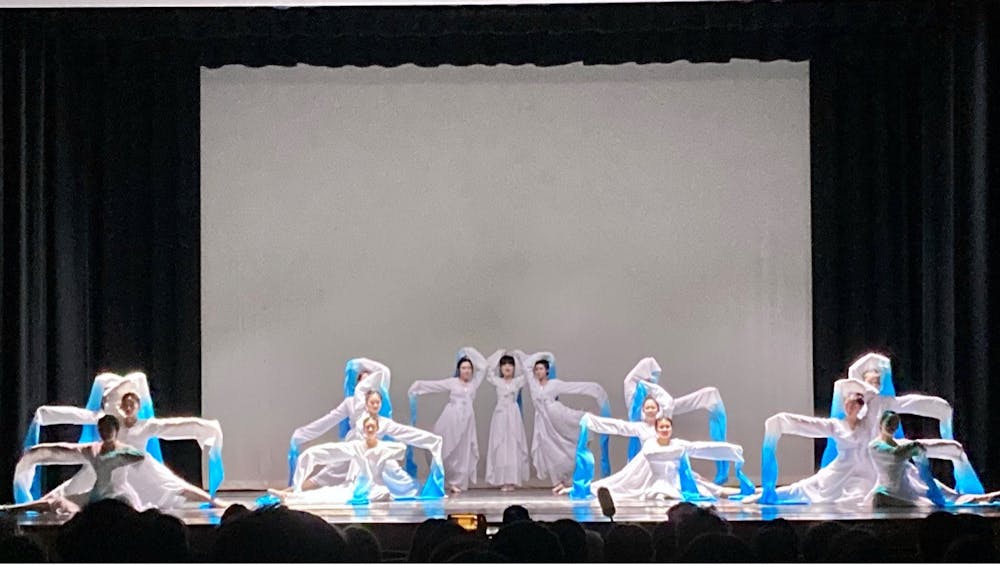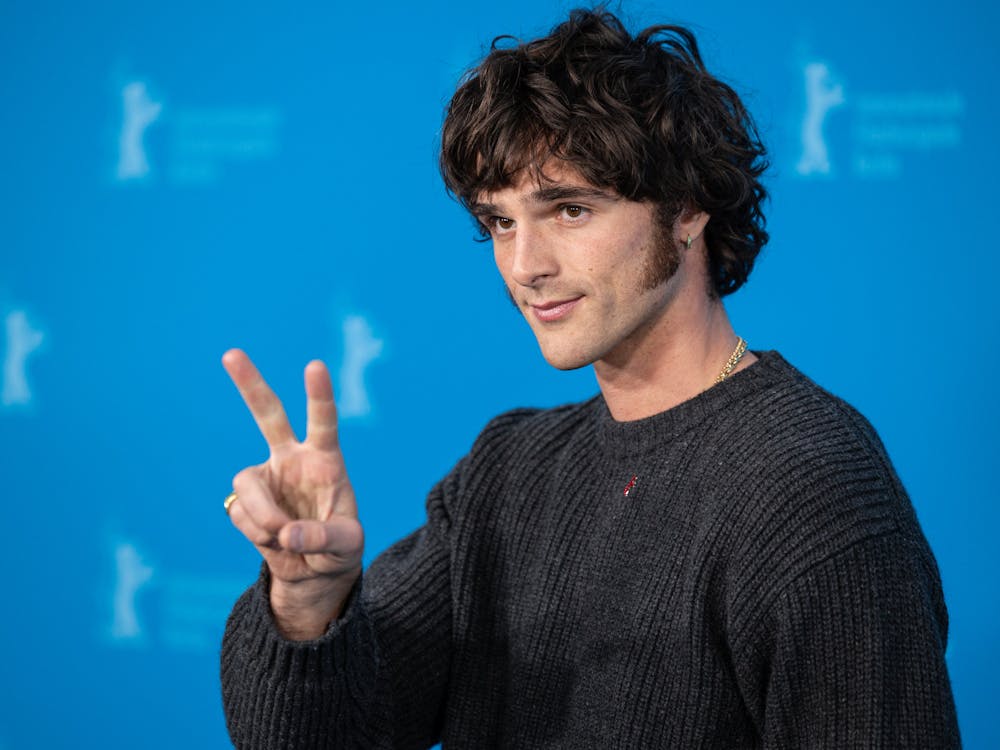The Lan Yun Blue Orchids, a traditional Chinese dance team on campus, performed in their second annual showcase on the evening of April 15. The showcase was titled Dancing Through the Dynasties and told the history of China through dance and musical performance. The program was set up as a timeline, using performances to characterize each dynasty. Additional performances from the Yong Han Lion Dance Troupe, Music Dynasty and the Hopkins Oriental Music Ensemble were featured.
The show began with the Shang dynasty, an era lasting from 1600 to 1046 B.C. A solitary dancer appeared on the stage, dancing with a traditional Chinese fan. The music was modern and upbeat while traditional, flowing movements were used.
As the Shang dynasty gave way to the Warring States period (476 to 221 B.C.), the music and style of dance took a darker turn. In this next number, called “Big Fish,” a group of dancers wore black tops and crimson skirts. This was a more somber set with dance movements reminiscent of mourning.
This was in sharp contrast to the next three performances representing the Han Dynasty (206 B.C. to 220 A.D.), a golden period in Chinese history where the Silk Road was established and Chinese ribbon dance was born. The first dance, called “Harvest of Tea,” was set to joyful music and featured dancers flourishing these long ribbons in mesmerizing shapes. The second dance, “Chills,” featured a dancer with a parasol in a modern-traditional-fusion set inspired by a Chinese drama show.
The final dance of the Han Dynasty period, called “A Blue Bird’s Warble,” was one of my personal favorites of the night. It was another solo act and stood out for how tonally unique it was. It began with the dancer silhouetted in shadow, body in a strange position while birdsong played in the background. The dancer’s movements, in contrast to the flowing motions of other dances, were oddly contorted and almost sinister yet still beautiful and sensual.
With the Tang Dynasty (618 to 907 A.D.) period came appearances by some of the other Chinese performance groups. The Oriental Music Ensemble performed “Auspicious Partridge,” a piece of classical Chinese music using traditional instruments.
The Yong Han Lion Dance Troupe gave a performance featuring two lions battling a sword fighter. The lions are always a joy to watch, but the performer using the sword was phenomenal, doing flips, flourishing her weapon and being an overall badass at martial arts.
The two Lan Yun performances for the Tang dynasty both featured fan dances, one using small paper fans and the other using round fans. It was fun to see the way they incorporated these objects into the dance, using them to cover their faces and add flourishes with great effect.
After the intermission and senior send-offs came the Song Dynasty (960 to 1279 A.D.). The three dances for this dynasty were called “No Regrets for the Last Time,” “The River of Life” and “In This World, No Other.” These were slower and more flowing dances. “The River of Life” used light blue fans and scarves to emulate the movement of water. “In This World” featured illusion-like movements emphasized by black-and-white fans.
For the Ming Dynasty (1368 to 1644 A.D.), the Chinese-interest a capella group Music Dynasty gave a performance. They performed “Fairy Tale” and — the only Western song of the night — Billy Joel’s “Vienna.” The Ming Dynasty also featured a dance performance using water sleeves, a type of extremely long sleeve extension that can be used akin to ribbons. Dancing in intricate shapes and concentric circles, the dancers beautifully conveyed the performance’s title, “Flowing Clouds, Dancing Water.”
The final dynasty before the modern era was the Qing Dynasty (1644 to 1912 A.D.). This featured the only duet, entitled “Whispers of Undying Love,” which told a tragic love story amidst fast dubstep-style and traditional dance. This dynasty also included two more performances from the Oriental Music Ensemble and the Yong Han Lion Dance Troupe.
At last, after dancing through 3600 years of history, the Lan Yun Blue Orchids finished with a performance firmly rooted in the culture of modern-day Chinese pop. The song for this final performance was a combination of “Weight of the World” and “Yes OK!”. In modern dress, jumping and vibrant, this final set was a satisfying end to a wonderful showcase.
Despite the historical context, the music for the dance performances was largely modern, and some of the dances also included contemporary movements. The themes of the different dynasties were really carried forward by the spirit of the dances, with the attitude and level of prosperity of each dynasty mirrored by the energy of the dancers.
In an interview with The News-Letter one of the audience members, junior Arjun Yogaratnam, spoke on the showcase.
“Overall, I really enjoyed the performances,“ he said. “I loved the mix of traditional and modern styles of dance and music along with how everything from the lighting to formations played into both the story behind the dances and the overall vibe.”
The Lan Yun Blue Orchids spring showcase was a huge success and did a great job of sharing Chinese culture and history with everyone who came, and I’m excited to see what they share next year!





